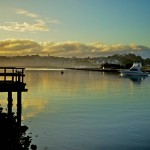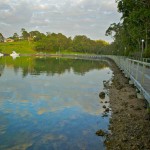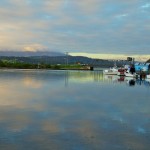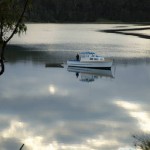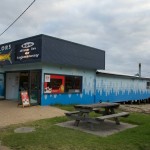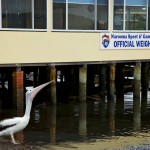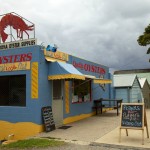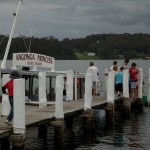We have just completed a trip to Kangaroo Island in South Australia. With Covid having stopped most travel this was a cause of great excitement, and I had long wished to visit “KI” as the locals call it. The first time on a plane for two years meant being at Sydney Airport two hours before a 7.15am flight, but it was worth it.
We were met at Adelaide Airport by the tour leader and taken on a tour of Adelaide Oval, Glenelg and Hahndorf before heading down to Victor Harbor for the night. The next morning off to Cape Jervis for the Sealink ferry across to Kangaroo Island.
Excluding the mainland, Kangaroo Island is Australia’s third largest island, after Tasmania and Melville Island. It is about 155Km long and averages 55Km wide, but is pinched about a quarter of the way west by a strip only a kilometre wide.
You land at Penneshaw on the eastern end. We went to Clifford’s Honey Farm to see honey production and Emu Ridge Eucalyptus Oil Distillery, where they make Eucalyptus Oil, Tea Tree Oil and Emu Oil. Surprisingly 90% of the world’s Eucalyptus oil comes from China, but the best stuff comes from the Mallee Eucalypt Bush. This is grown in small bushes in rows and harvested by a commercial harvesting machine. It is then boiled and distilled to make the oil.
Raptor Domain is a wildlife experience of mainly raptors, or birds that capture things in their claws but included other types of birds. That was pretty cool, and we got to hold wedge tailed eagles and owls.
At Kangaroo Island Brewery they make a number of beers and so was a pleasant place to stop. They offer a tasting paddle of 4 types of beers. I think everyone had been on early flights the previous day and an early start for the ferry crossing, so some time out was needed. We then went to our accommodation in Kingscote, which is the main town on the western portion.
The accommodation was basic, but I think Covid had really strained things for them. The catering was neither good nor timely. In all fairness all hospitality places are complaining about shortages of staff and getting people to come to an island to serve food would be a difficult thing. However, I think they must have started that morning.
I must admit that at this stage I was thinking that I would need to come back to Kangaroo Island to see Kangaroo Island, as most of the first day had been spent seeing commercial enterprises, which is not really my thing.
Fortunately, the second day was completely different. We travelled the length of the island to Remarkable Rocks, a spectacular rock formation on the southern coast. We then went a short distance to Admirals Arch, a giant archway in the rock which is inhabited by seals.
The highlight of the day though was Seal Park, where seals and sea lions are in abundance. Hair seals have shorter coats than fur seals, and so they need to stay warmer. They are lying on the tracks, on the beach and in the hills under bushes. There were lots of pups to see playing.
The breeding season for seals is very short. The females come into season for only a few days after they have their young and the gestation period is about 18 months. As a result, there are a lot of male seals hanging around females that are ready to deliver their young. The males are about 400Kg, so you don’t want to get in their way.
We then went to Hanson Bay Wildlife Sanctuary. Ideally here we would have seen the Visitors Centre and lots of koalas to see. Unfortunately, the 2019 bush fires decimated most of the island. The Visitors Centre was destroyed and of the 50,000 estimated koalas on Kangaroo Island only about 10,000 survived.
A few stumbles aside, I would recommend a visit to Kangaroo Island. In normal times it would be a great place if you are into nature or just want a relaxing time for a few days.
We returned to our accommodation in Kingscote and then next morning caught the ferry back to Cape Jervis and headed off for a cruise on the Murray Princess.





